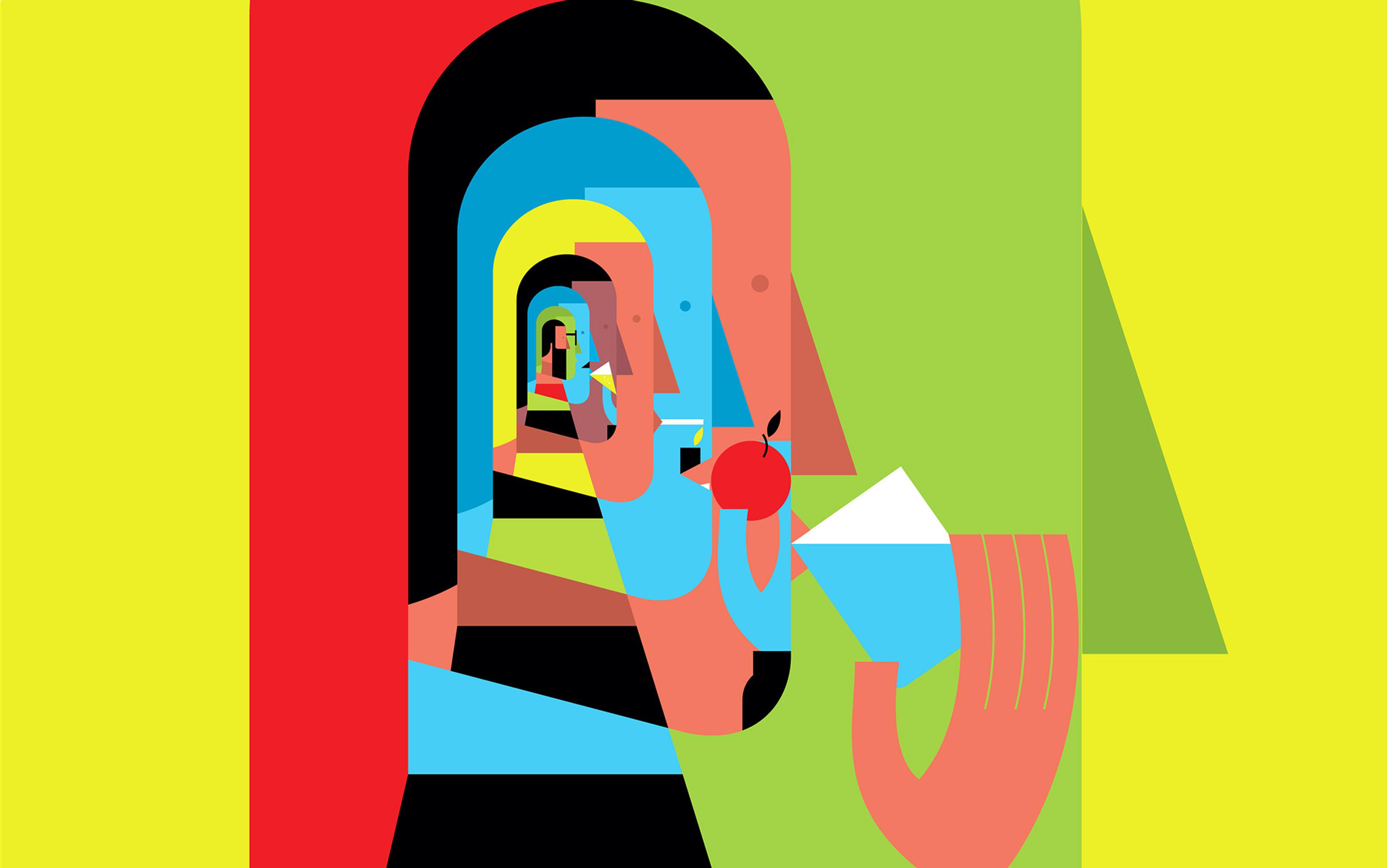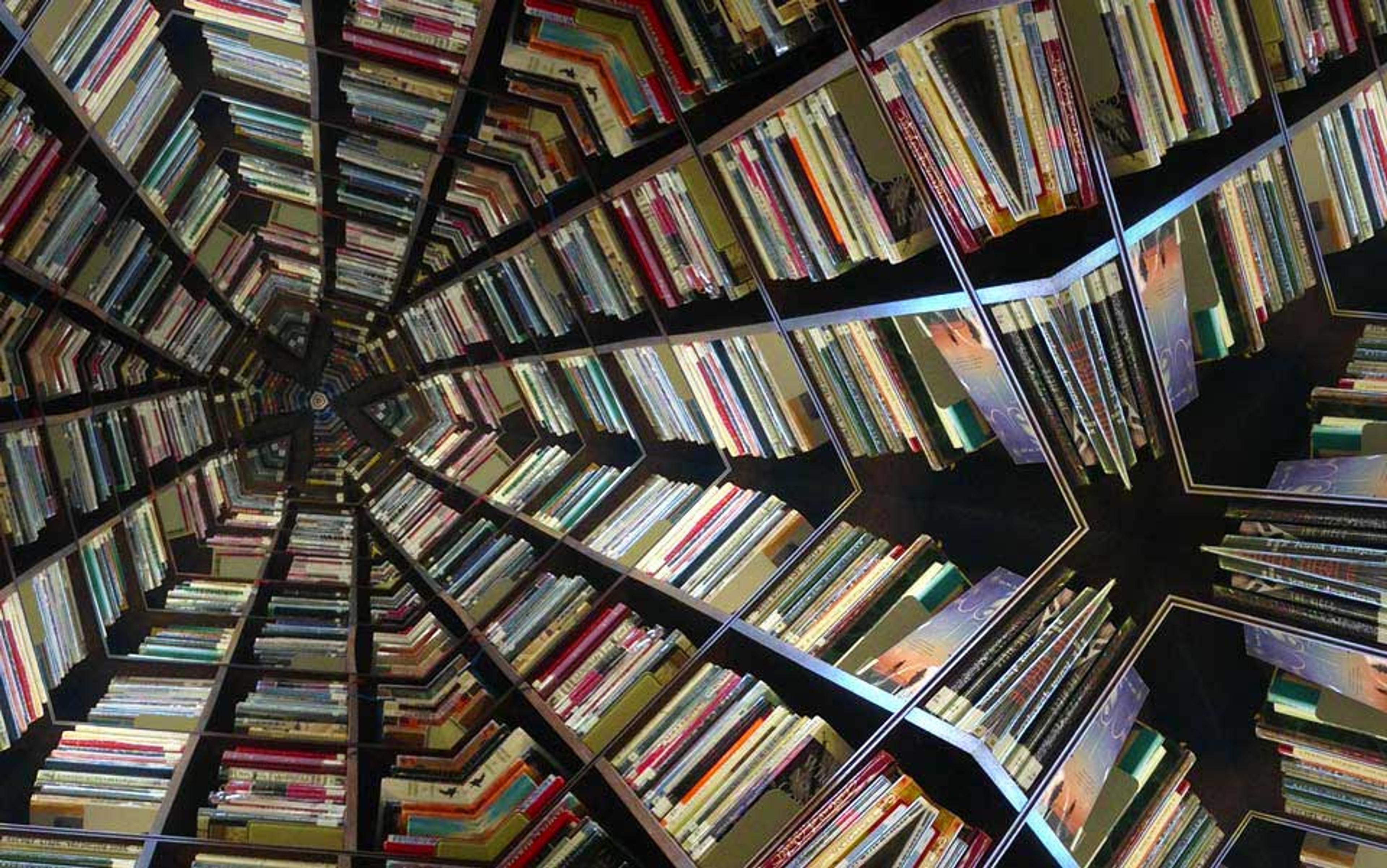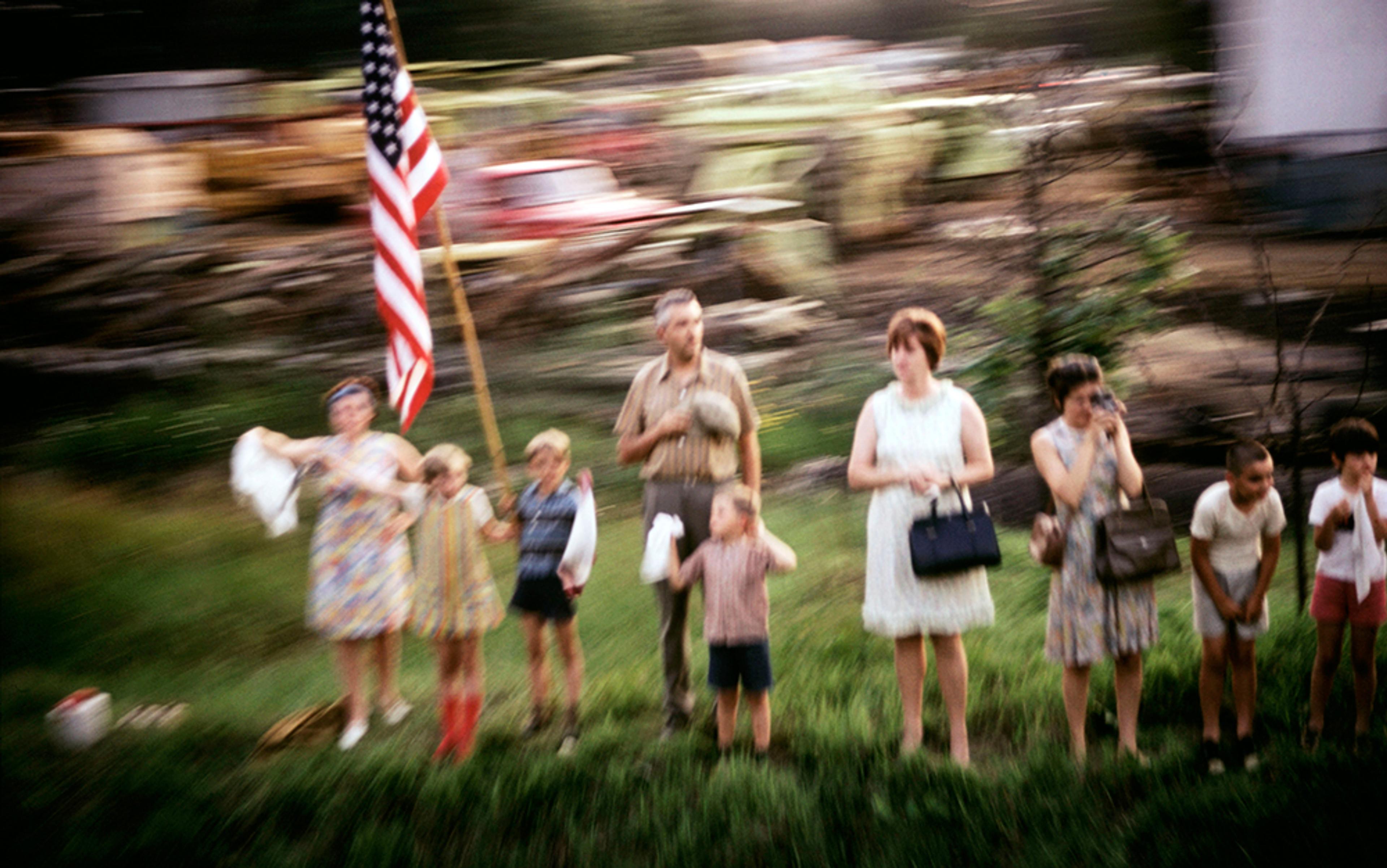When I was in my mid-30s, I was faced with a difficult decision. It had repercussions for years, and at times the choice I made filled me with regret. I had two job offers. One was to work at a very large physics experiment on the West Coast of the United States called the National Ignition Facility (NIF). Last year, they achieved a nuclear fusion breakthrough. The other offer was to take a job at a university research institute. I agonised over the choice for weeks. There were pros and cons in both directions. I reached out to a mentor from graduate school, a physicist I respected, and asked him to help me choose. He told me to take the university job, and so I did.
In the years to come, whenever my work seemed dull and uninspiring, or the vagaries of funding forced me down an unwelcome path, or – worse – the NIF was in the news, my mind would turn back to that moment and ask: ‘What if?’ Imagine if I were at that other job in that other state thousands of miles away. Imagine a different life that I would never live.
Then again, perhaps I had dodged a bullet, who knows?
Every life contains pain. Even the perfect life, the life where you have everything you want, hides its own unique struggles. Writing in The Genealogy of Morals (1887), Friedrich Nietzsche said: ‘Man, the bravest animal and most prone to suffer, does not deny suffering as such: he wills it, he even seeks it out, provided he is shown a meaning for it, a purpose of suffering.’ A life apparently perfect but devoid of meaning, no matter how comfortable, is a kind of hell.
In our search for meaning, we fantasise about the roads not taken, and these alternative lives take on a reality of their own, and, perhaps, they are real. In his novel The Midnight Library (2020), Matt Haig explores this concept. In it, a woman named Nora Seed is given the chance to live the lives she would have lived had she made different choices. Each life is a book in an infinite library. Opening the book takes her to live in that other world for as long as she feels comfortable there. Each possible world becomes a reality.
For centuries, philosophers have dreamed of possible worlds. But only with the advent of quantum physics and the need to interpret its counterintuitive predictions did it appear that these possibilities might be real. Introduced in the 1950s by a graduate student, Hugh Everett, to little fanfare, and promoted in the 1970s by the physicist Bryce DeWitt, the ‘many-worlds’ interpretation of physics has captured the public imagination and flowered a burst of art and culture. Born out of a need to interpret the behaviour of the smallest building blocks of our Universe, quantum physics has powered a cultural conversation from the depths of academic philosophy and science, to the pinnacle of Hollywood’s elite.
The modern concept of possible worlds is attributed to the German polymath, co-inventor of calculus, and rival to Isaac Newton, Gottfried Wilhelm Leibniz, in his work Theodicy: Essays on the Goodness of God, the Freedom of Man, and the Origin of Evil (1710). The phrase ‘best of all possible worlds’ comes from this work and refers to Leibniz’s attempt to solve the problem of evil by proposing that ours is the best possible world. In other words, any other possible world would contain more evil.
‘Could Socrates have been an alligator?’ Yes. His being a human is not necessary but contingent
Leibniz drew on the work of the 16th-century Spanish Jesuit priest Luis de Molina, who posited that God contains ‘middle knowledge’, the knowledge of what a person would do if placed in a given situation. In any given possible world, a person’s actions are fixed but, from one world to another, they may act differently because of changes in their life circumstances. Hence, God gives us a kind of free will, which is essential to holding us responsible for our actions but, by his middle knowledge, places us in the best possible world for the greatest number of people; in this world, our choices are predetermined. Molina’s theology proposes that even God requires some people to damn themselves to save others.
The contemporary American analytic philosopher Alvin Plantinga drew on Leibniz’s theological ideas to produce his seminal work on possible worlds, The Nature of Necessity (1974). As in Haig’s novel, Plantinga conceives of a library of books, each corresponding to a possible world. There, he defines a book on a world as everything that is true, including everything necessary (meaning true across all worlds) and everything that is contingent (meaning true only in some worlds). Each world has one, and only one, book of true things.
Plantinga illustrates the difference between necessary and contingent truths in this way: ‘Could Socrates have been an alligator?’ Yes. There may be a possible world where Socrates wakes up, as in Franz Kafka’s novella The Metamorphosis (1915), to find his body to be that of an alligator. Thus, Socrates being a human being is not necessary but contingent. It is not true in every book in the library. On the other hand, mathematical implications like 1 + 1 = 2 and logical proofs are true in all worlds. They are necessary.
Despite considering many possible worlds, like Leibniz and Molina, Plantinga asserts that there is only one real world. For him, alternative worlds are useful for philosophers to think about but do not actually exist.
The many-worlds interpretation (MWI) of quantum physics, on the other hand, says that all possible worlds exist, and the one we live in is no different from any of the others. According to one form of this belief, somewhere out there is an exact duplicate of you, your house, your family, but one small detail is different, perhaps something as tiny as a stray photon that went left instead of right, or maybe something big like you have a different significant other. Maybe a stray cosmic ray hit your DNA before you were born, and you have red hair instead of brown, or you developed a serious birth defect. Maybe you don’t exist at all.
To the layperson, the idea of all these worlds existing out there might seem disturbing because it takes away from our own personal uniqueness. To philosophers like Plantinga, it is disturbing because it takes away from the uniqueness of truth.
A good example is Schrödinger’s cat. In this classic thought experiment, a cat is placed in a box and the lid closed. Say I also put in the box a semi-reflective mirror that has a 50 per cent chance of letting light through, and a 50 per cent chance of deflecting light. Behind the mirror is Detector D (for ‘Death’), which can detect even a single photon of light and, if it does, it sends a signal that opens the lid of a vial of poison, filling the box with poison gas and killing the cat. Next to the mirror is Detector L (for ‘Life’), not hooked up to any poison. An automatic emitter inside the box is programmed to fire a single photon at the mirror at a certain time. We don’t know which detector it will hit because it is random. Once it does, we wait a minute to ensure that the poison has had its effect.
Both are still possible – a single world containing two contradictory facts
If the box is completely sealed and impenetrable by anything external, we won’t know what happened inside until we open it.
All this seems very ordinary until I take the quantum nature of light into account. A quantum particle, experimental science has shown, can be in two states at once until it is measured. Thus, when the photon is fired at the mirror, it does not go through or deflect. Rather, it enters a state where, having gone through and having been deflected are both still possible – a single world containing two contradictory facts. These facts are, hypothetically, passed on to the cat, although nothing as large and complex as a warm-blooded animal could be put into such a state in practice.
We know this is true for particles because of what physicists call the double-slit experiment. In it, a single beam of light is sent through two slits in a barrier to a screen on the other side. Even though the light originates as a straight beam, after it passes through the two slits, it emerges as two interfering waves hitting the screen together. This looks like alternating bars of light and dark.
We want to know if light is made of particles or a continuous wave. To do so, we fire the smallest amount of light we can, which are little packets called photons, at the double slit. We hypothesise that if these appear at individual points, then photons are particles; but if they appear spread across the screen, then photons are waves. We begin the experiment and see immediately that the photons appear at individual points on the screen: score 1 for particle hypothesis. If we continue firing photons, however, we find that the dots appear in the same alternating light and dark bars as if the photons were interfering with each other. Score 1 for the wave hypothesis.
The reason this happens is because, when the photon goes through the barrier, it enters what physicists term a superposition where it has, in a sense, passed through both slits at the same time, like a wave, but arrived at one point on the panel, like a particle. This is called wave-particle duality.
In standard interpretations of quantum physics, we do not say that the photon has passed through both slits at the same time; rather, we say that its wavefunction – a kind of probability field – has passed through both slits at the same time. That wavefunction then ‘collapses’ or vanishes, leaving the one photon on the panel. This resolves the contradiction neatly because we can assert that ‘the photon entered the left slit’ and ‘the photon entered the right slit’ are never simultaneously true. Rather, we say the wavefunction passed through the slits and collapsed into the photon’s position on the screen.
According to the MWI of quantum physics, however, the entire wavefunction is a spectrum of alternative realities coexisting. These worlds are all connected and the photons in them interact weakly before they are measured – but the very act of measurement causes them to either split apart or appear to do so. When that split happens, copies of you and the rest of the Universe split apart as well.
The MWI is controversial and is itself subject to interpretation depending on whether you believe there is a quantum mechanism for world splitting, or if it is simply how human beings experience quantum phenomena.
Real or not, possible worlds explain strange quantum paradoxes. For example, in the double-slit experiment, if I place a detector in front of each slit, it will detect only a single photon going through one or the other. Never both. If I take the detectors away, I get the interference pattern as if the photon went through both slits. This creates a paradox. Why can it be one way when I measure, and another when I don’t?
This doesn’t happen in classical physics. If I shoot an arrow at a bullseye, I can be absolutely certain that the arrow will follow a single trajectory from my bow to the target, whether I watch it fly or not. If I don’t watch it but imagine a world where I did, that is called a counterfactual world. In classical physics, counterfactual worlds and real worlds are always the same but in quantum mechanics they are not. The world is really different if I look at a particle flying through space versus if I do not.
Physicists knew this to be true in the 1920s, but it took more than 60 years before anyone proposed a way to split the difference between looking and not looking. In 1988, the physicists Yakir Aharonov, David Albert and Lev Vaidman introduced such a method, called ‘weak measurements’. These measurements collect some information about particles and, over the course of many, many measurements, can give us statistical information that helps us understand what is going on inside a quantum superposition.
We are more like two-dimensional beings in a 3D world, perceiving only our little slice
Weak measurements let us detect traces of particles even when they are not present. If there is a trace of a particle, that means it had some measurement effect but was not necessarily there in any real sense. This is what researchers see during the double-slit experiment. A particle has a trace from both slits because of the pattern on the screen but has no presence in either. If a particle is present, that would be ascertained through a strong measurement where it is localised, literally appearing on a detector screen.
The MWI interprets trace and presence in a unique way. A trace is when particles in different worlds have not been measured strongly enough to stop interacting, so the worlds are not ‘split’. When the worlds cease interacting (split), then trace becomes presence.
Real-world studies of ‘weak measurements’ have been designed with atoms, photons and other elements of the quantum world. For example, a lens can deflect photons in a laser slightly and cause them to interfere differently with another beam of photons than if the lens is not present. You can imagine, therefore, if you were to put lenses in front of the slits, they would have a measurable effect but, if the deflection is very slight, it would not be enough to collapse the wavefunction or split the worlds. Using that fact, you can construct experiments that allow you to see traces without presence.
Real experiments measure bizarre effects inside superpositions. For example, experiments with both photons and atoms have been done that show that sometimes a particle duplicates so that it can be in two places at once but each with 100 per cent probability, not the 50 per cent probability of the double slit. The particle will compensate by spawning a ‘negative’ copy of itself, also with 100 per cent probability, somewhere else, so that the total still adds up to one.
These results are counterintuitive unless you believe the wavefunction is a real thing, in which case the particle is a wavefunction that has 100 per cent probability peaks in two spots and a (-100 per cent) trough in another.
For this reason, some flavours of the MWI, such as Vaidman’s, maintain the primacy of the wavefunction over the concept of having multiple ‘copies’ of the world that split. In other words, the multiverse isn’t many worlds but one world, and we are more like two-dimensional beings in a 3D world, perceiving only our little slice. Worlds are like pieces in a jigsaw puzzle, fitting together in a commonsense way when together, but defying intuition when left apart.
This suggests that our lives too might be a jigsaw puzzle. Perhaps they make sense only when we look at them across a multiverse of possible lives and, if we could only talk to those other copies of ourselves, we could understand our experiences. Consider that, when we imagine ourselves in other possible worlds, we don’t just want to know how our alternative selves are getting along. We want to know what they would think of us, what it would be like to speak to them, and we want to know what it might be like to live in those other worlds that those other selves inhabit. More than that, we want to resolve the uncertainty we have in our own past decisions by asking them: ‘How did it work out?’ The only way to do that is to uncover the looking glass and glance through.
One means of connecting with our alternative selves is through literature, film and the arts. The MWI first appeared in Michael Moorcock’s novella The Sundered Worlds (1962), a space opera that ranges across a vast multiverse. In this Star Wars-like action novel, the hero Renark von Bek undertakes to save the multiverse from Armageddon. This novel also hosted some of the earliest uses of virtual reality, computer tablets, digital displays and, of course, quantum physics, and it also launched Moorcock’s long career.
Since then, numerous novels, movies and TV shows have made use of the concept, including children’s fiction. The first book about a parallel universe that I recall reading was the children’s book The Double Disappearance of Walter Fozbek (1980) by Steve Senn, about a boy who somehow swaps places with his dinosaur counterpart in a world where people are all dinosaurs. As a child, I was blown away by this idea of parallel worlds, and that remained my favourite book for many years.
A rupture opens a doorway, a necessary trope for reaching our parallel selves
The idea has captured the movies, too. Among the many multiverse films are those in the Back to the Future trilogy (1985-90), about what happens when we go back in time, change the past, and find the future is another world entirely. There’s also Spider-Man: Into the Spider-Verse (2018), a computer-animated smash hit about a high-school student, Miles Morales, who becomes a Black Spider-Man in his own universe and teams up with Spider-people (men, women, and even Spider-Ham, a pig) from other universes to defeat his nemesis Kingpin. Also, Doctor Strange in the Multiverse of Madness (2022), a Marvel Universe battle between good and evil in parallel worlds; and the Academy Awards Best Picture winner, Everything Everywhere All at Once (2022), about a heroine who learns that she can draw skills and powers from her alternative selves to battle villains who threaten the world.
In each work, a rupture opens a doorway, a necessary trope for reaching our parallel selves. Yet the MWI actually tells us that worlds are generally unreachable. The work on weak measurements means that worlds can diverge without completely disconnecting. A better device might be a hidden passage that already exists, more like the wardrobe portal in C S Lewis’s Chronicles of Narnia series (1950-56) than a dangerous rip in space and time. I have yet to read a story where the plot revolved around keeping worlds from separating rather than worlds accidentally and catastrophically merging, but that might be more realistic.
In some cases, the literary purpose of the multiverse is not so much to connect parallel worlds as to tell different stories with the same characters. Star Trek, for example, depended on the multiverse for its James T Kirk reboot movies (2009-16), allowing the director J J Abrams to skirt around canon and change details to reimagine the young Kirk and his adventures on the USS Enterprise.
Using the multiverse to reboot Spider-Man in the movie Spider-Man: No Way Home (2021), MWI explains how the different actors – Tobey Maguire, Andrew Garfield and Tom Holland – who have played Spider-Man over the years might all exist simultaneously in different universes, and how they might meet up to fight as a team. The multiverse is not only a fun way to have all three actors appear in the movie but also a means of exploring how their characters differ and what they thought of the choices they made and the challenges they each faced, both similar and unique.
The multiverse has also opened up new ways of looking at the human condition. One of the most fascinating areas where culture, philosophy and possible worlds collide is in the work of Robert Lanza on biocentrism, which is a philosophical approach to physics through the lens of living beings. Lanza, a professional biologist, proposes that the Universe arises directly from an individual’s conscious observation of it. He hypothesises that, for this reason, a conscious being cannot cease to be conscious. This leads to the potential fact that it is impossible to be dead. Instead, one’s consciousness simply splits off, by quantum processes, into worlds where that consciousness can continue to exist. Every wavefunction collapse or world splitting leaves us in a world where we remain alive.
Another novel, The Doors of Eden (2020) by Adrian Tchaikovsky, explores parallel worlds through the phenomenon of branching evolution. For each parallel Earth in the story, a different species dominates, having continued on, rather than suffering extinction. For instance, the author imagines what a society of trilobites might look like. As in many multiverse stories, reality collapses and the different worlds bleed into one another. The book contains many detailed and imaginative scenarios about speculative evolution, and, from an MWI perspective, it is perfectly reasonable to imagine many different potential evolutionary outcomes, since evolution is highly dependent on randomness, including quantum variations in cosmic rays striking DNA.
Even the art world has taken notice of the multiverse. In response to the COVID-19 pandemic, the Burning Man in the Multiverse experience in 2020 showcased the multiverse with immersive visual styles in a virtual event. In this project, eight teams developed different virtual universes, with a unique Burning Man in each. You could traverse the Burning Man Playa – the dry lake bed where it normally takes place at Black Rock City – in virtual reality as an avatar, explore art and sculpture created within a virtual world, and imagine the parallel realities of the annual festival itself.
What greater despair than to believe you are living the wrong life?
The most powerful reason why the multiverse has infiltrated culture is because people are storytellers. Research shows that this tendency is universal and appears in early childhood. It is written in our DNA. Implicit in storytelling is the modification of details such that one possible world becomes another. Such narratives are essential to how our species has understood the world for millennia. Meta-stories containing conflicting possible worlds simultaneously become not only plausible but essential to how we interpret our perceptions: personal, nonlinear and qualitative, rather than objective, linear and quantitative.
The human mind even creates its own multiverses through dreams, where alternative realities appear. Who hasn’t dreamed of a loved one acting in ways they never would, or living in a house that they’ve never seen before? Fundamentally, the human mind has evolved to imagine multiple possible futures branching out from the present. Whether this is actually the case is an open question that physics still must resolve, if it ever can.
While the many-worlds interpretation has at times been overused, the pervasiveness of the multiverse in culture is a shift with benefits. There is more than one way to see the world, and every conscious mind may create its own version of reality. In a world awash with data, hard facts have become difficult to come by, and everyone needs to have their minds open to the possibilities that what they believe or have been told is only one of many possible worlds.
On the other hand, when we start longing to live in one of those alternative realities, it can make us desperately unhappy. This is the curse of imagining all these branching pathways in our lives. As the American novelist James Branch Cabell wrote in The Silver Stallion (1926): ‘The optimist proclaims that we live in the best of all possible worlds; and the pessimist fears this is true.’ What greater despair than to believe you are living the wrong life? Yet, how can we claim a life is wrong? A life full of suffering is not a meaningless one as Nietzsche points out.
As Nora understands at the end of Haig’s The Midnight Library:
It is easy to mourn the lives we aren’t living. Easy to wish we’d developed other talents, said yes to different offers … It is easy to regret, and keep regretting, ad infinitum, until our time runs out … Those lives are happening, it is true, but you are happening as well …
This Essay was made possible through the support of a grant to Aeon+Psyche from the John Templeton Foundation. The opinions expressed in this publication are those of the author and do not necessarily reflect the views of the Foundation. Funders to Aeon+Psyche are not involved in editorial decision-making.






